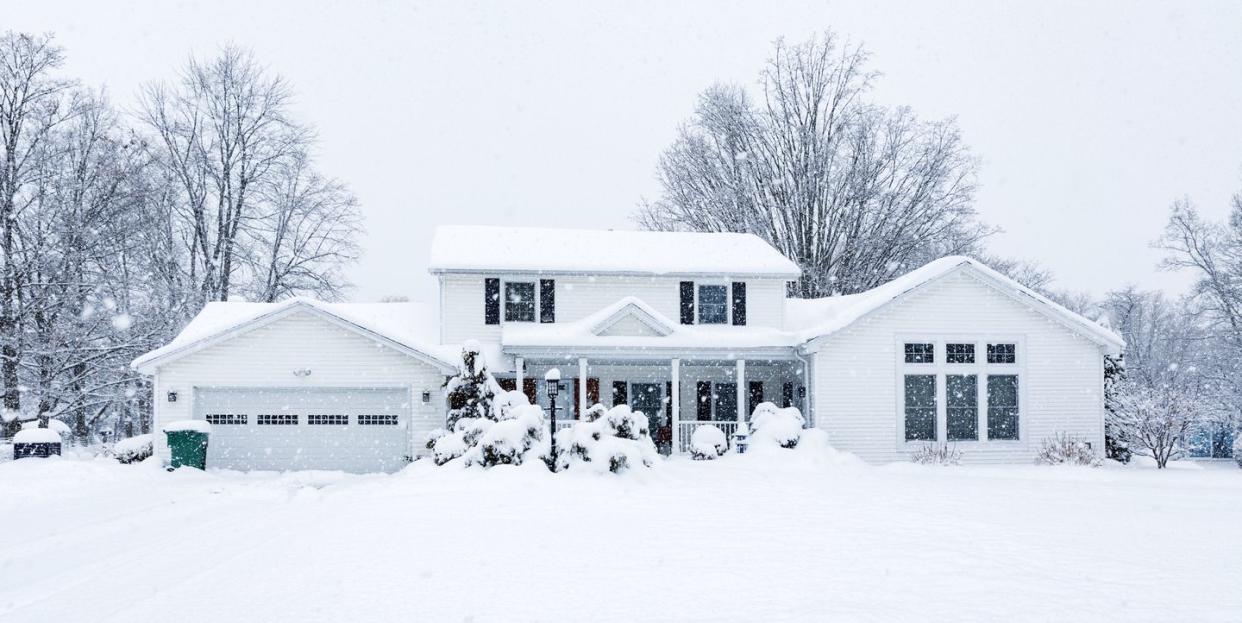You Should Never Put Your Generator Next to an Air Vent During A Power Outage

A historically severe winter storm brought rare snow and ice to Texas this week. The state’s independently-owned power grid failed, and pipes burst across the area, leaving many people without power and water in freezing temperatures.
Health officials across the state are warning about the dangers of carbon monoxide poisoning after people have resorted to using alternative sources of heat in their homes.
If you live in the area, getting warm and staying safe are an urgent priority. But, if you’re watching in horror from elsewhere, you’re probably also wondering what you’d need to do if you were in the same situation.
Twitter has been flooded with advice from people who live or have lived in cold weather climates on the right steps to take when you’re in an emergency situation like this.
ATTN: ANYONE WITH NO HEATING OR POWER CURRENTLY
I know it's cold, I have some tips for you, thanks to having been through this before, many times. 🧵
Please RT the thread if you know anyone without power currently! 🖤— 🥕EasterGryffon🐇 (@CherryGryffon) February 15, 2021
No running the car in the garage, no using the propane or coal barbecue in an enclosed space. Carbon Monoxide poisoning is the biggest killer during power failures.
— anemone canadensis (@ACanadensis) February 17, 2021
10. If you’re sleeping alone, the fetal position is the best way to retain warmth. Your extremities may be chilly, but DO NOT WEAR SOCKS OR GLOVES TO BED. If your hands or feet sweat in the cold, they will be even colder. You’re better off going without, trust me.
— The Esports Guy at PUMA (@NotMattShaw) February 15, 2021
if there are multiple levels to your house, just accept that the top floor is going to be the warmest. heat rises, cold air sinks. if you have a particularly toasty bedroom it's easier to convert that to a "warm room" instead of trying to heat the entire house.
— rebecca mix (@mixbecca) February 16, 2021
Overall, the advice above is great, says FEMA-certified natural disaster preparedness instructor Cheryl Nelson, founder of Prepare with Cher. However, she adds, it’s not all necessary. Here are the biggest do’s and don’ts Nelson recommends to keep safe and warm if you find yourself in an emergency situation like this.
Do:
Use a generator for power, if you have one.
Move your family—pets included—to one room in your house, ideally upstairs, where there is naturally more heat.
Stay in the center of the room to avoid cold air leaking through windows and vents.
Seal as many openings or cracks as you can (like a doorway) with towels to try to retain heat.
Eat perishable items first.
Try to limit how often you open your fridge or freezer.
If it’s been four hours with no power or your fridge temperature is creeping close to 40 degrees, put your perishable food in a bag and place it outside in the snow to keep it cool.
Use a space heater if you can—but don’t go to sleep with it running as that risks carbon monoxide poisoning.
Wear multiple layers of clothes, ideally made of fabrics like wool, flannel, silk, and fleece. Cotton is breathable and will let heat out.
Put on hats and mittens. (Mittens are warmer than gloves because your fingers can be together.)
Put clothes and socks on pets.
Put blankets and towels on bare floors for warmth.
Turn on your faucets, just a little, to keep pipes from bursting.
Drink hot drinks (if you can).
Drink plenty of water to help your body function normally.
Layer on blankets while you sleep, with thinner, denser blankets on top.
Sleep huddled with family members or pets.
Sleep in the fetal position for added warmth.
Use flashlights rather than candles for light sources.
Don’t:
Put your generator in a garage or near windows. Instead, you should put your generator outside and away from any windows.
You also don’t want it next to an air vent: This can cause carbon monoxide to leak indoors.
Use your oven or stove as a heat source, as that risks carbon monoxide poisoning.
Try to warm up in a vehicle in a garage. You risk carbon monoxide poisoning, due to the fumes from vehicle exhaust being trapped in a confined space.
Fall asleep in your vehicle for risk of carbon monoxide poisoning.
Drink alcohol—it can dehydrate you.
Leave electronics plugged in. They could be at risk of surge damage when the power returns.
You Might Also Like

